Vuelta a España A-Z
The Vuelta a España is the third and final major tour of the season. Although not rated as highly as...
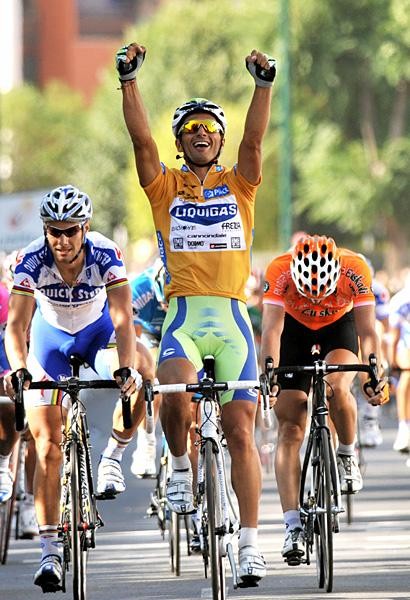
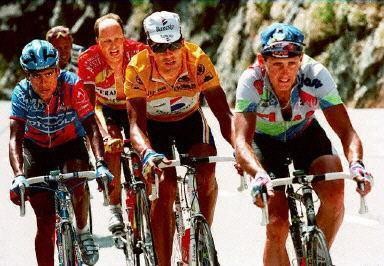
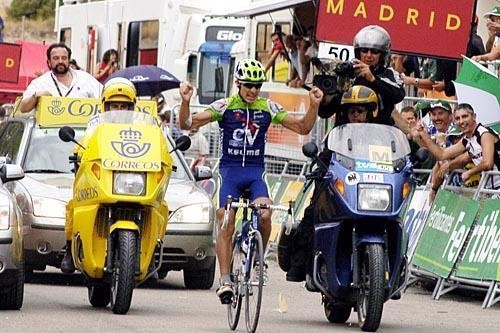
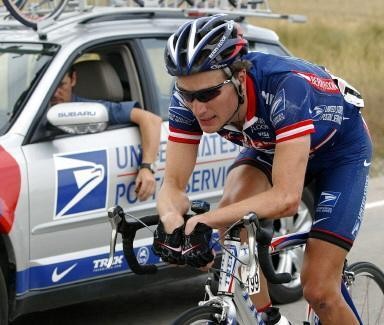

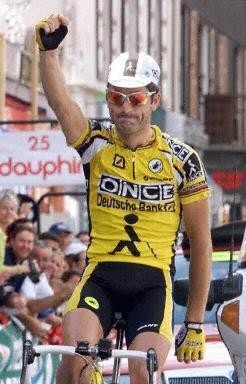

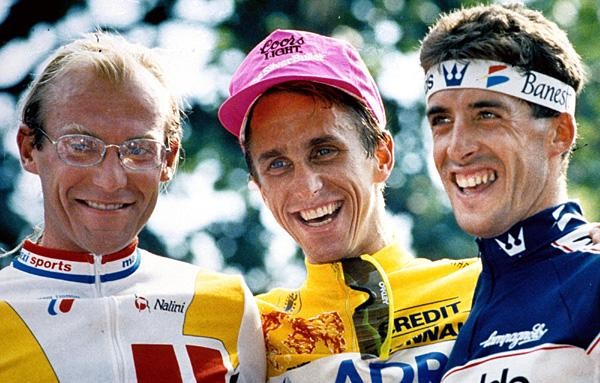
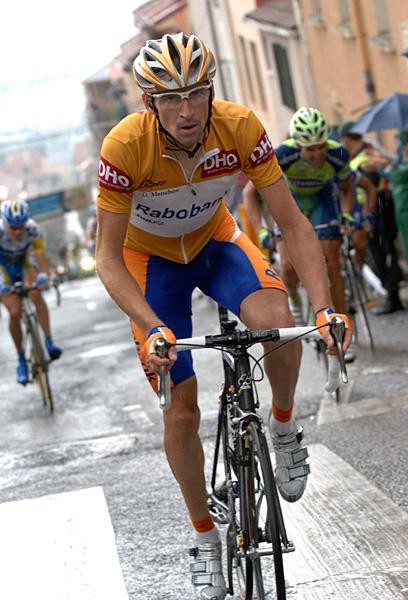
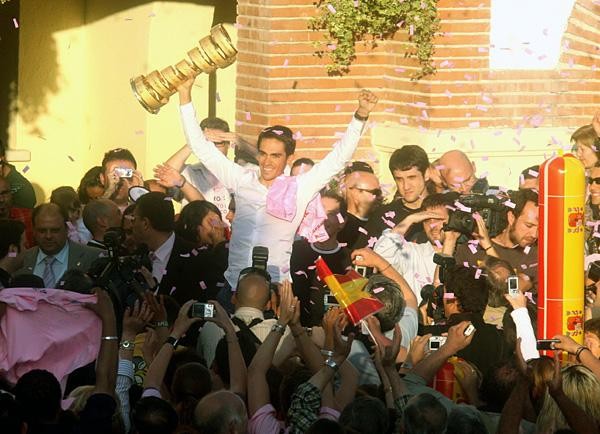


Tales from the peloton, September 8, 2008
The Vuelta a España is the third and final major tour of the season. Although not rated as highly as those of France and Italy, this year's Vuelta brings together some of the world's best riders, including this year's Giro d'Italia and last year's Tour de France champion Alberto Contador. Procycling's Peter Cossins focuses on the ins and outs of the Spanish grand tour with an A-Z of the Vuelta's key historical players and places
Read part one.
O
The maillot ORO (gold jersey) is the jersey worn by the race leader at the Vuelta. The leader's jersey has been both red and yellow in the past. The points and mountains jerseys have also changed colour with a degree of frequency. Last year a magenta jersey was awarded to points winner Daniele Bennati, while mountains victor Denis Menchov claimed a white, blue and grey tunic that was not dissimilar to the white jersey he also picked up for the combined prize awarded to the rider ranked highest in all three jersey competitions. The Vuelta does not offer a prize for the best young rider.
P
The Vuelta doesn't visit the PYRENEES every year. It does return regularly, though, usually lured in by cash offered by the owners of ski stations hoping to give their resorts a promotional boost. What is probably this year's toughest stage takes the riders 224km from Barbastro to the wonderfully named Naturlandia resort in Andorra. The stage concludes with a loop over the Alto de la Rabassa; on the second passing, the riders continue on for another 4km to Naturlandia, which is promoting itself as a year-round mountain resort. The following day brings another summit finish, this one at the favourite resort of the Spanish royal family, Pla de Beret. The resort hosted a finish of the 2006 Tour won by Denis Menchov.
Get The Leadout Newsletter
The latest race content, interviews, features, reviews and expert buying guides, direct to your inbox!
Q
The stage nine finish/stage 10 start location of Sabiñánigo has become a regular staging post for the Vuelta thanks to its position in the foothills of the central Pyrenees. It is also the start/finish location for Spain's biggest cyclosportive, the QUEBRANTAHUESOS, which crosses into France via the Somport pass, then goes over the Col de Marie Blanque and returns to Spain via the 26km grind over the Portalet. For those who think the worst is then over on the 210km route, the sharp slopes of the 2km Hoz de Jaca climb near the finish provide a nasty nudge back to painful reality.
R
Switzerland's Tony ROMINGER jointly holds the record for the most overall victories, tied with Roberto Heras on three. The Swiss is the only rider to win three consecutive Tour of Spain titles when he won in 1992 to 1994 for the Clas team (Mapei-Clas in 1994) backed by the main dairy-producing company in Asturias. Heras would have emulated Rominger's feat of three consecutive wins if he had not tested positive for EPO use following his success in the 2005 edition. That would have been the Spaniard's record-breaking fourth title.
R
Spaniard Delio RODRIGUEZ, overall winner in 1945, holds the record for the most stage wins with 39, six of them leading to that winning ride. Alessandro Petacchi, who just served a suspension for doping, lies second in the standings with 19 victories. Rodríguez is also tied with Gustaaf Deloor for the record of the most days in the leader's jersey with 32. Tony Rominger clocked 31 days in the lead at the Vuelta.
S
Not too surprisingly, SPAIN holds the record for the most overall Vuelta wins with 27. France is next in the standings with nine victories, the last of them coming thanks to Laurent Jalabert in 1995. Belgium is third in the standings with seven Vuelta titles. There have only been two winners from outside Europe – Colombia's Luis Herrera in 1987 and Kazakhstan's now-banned Alexandre Vinokourov in 2006.
T
In 1975, Spain's Agustín TAMAMES became the first man to win the Vuelta by taking the lead on the very last day when he won the final time trial of the race into San Sebastián. Domingo Perurena was the unlucky man, losing out to Tamames by just 14 seconds.
U
After becoming joint owners in 1979, UNIPUBLIC have run the Vuelta outright since 1982. Back in June, Tour organisers ASO bought a 49 per cent stake in Unipublic, with the remaining 51 per cent staying in the hands of the Spanish Antena 3 media group. ASO's focus is set to be on the competition and marketing sides, with the objective of boosting the profile of Spain's national tour, which lies a distant third in the major tour pecking order in terms of status.
W
Belgium-based Michael WRIGHT became the first Briton to lead the Vuelta when he won the second stage of the 1969 race into Badajoz. Wright held the lead for two days. The only Britons to have emulated Wright are Millars Robert and David. The former led for eight days in 1985 and six days the following year, while David led for three days after his victory in the prologue time trial in 2001.
X
Victory at the XORRET DE CATI summit in 1998 was the first of no fewer than four taken by José María "Chava" Jiménez during that edition of the race. Jiménez is revered by Spanish fans as the country's greatest climber of recent times. An unpredictable personality who could be brilliant one day and finish off the back of the pack the next, the mercurial Spaniard rarely shone outside his homeland. However, his legion of fans could usually depend on him delivering something exceptional at the Vuelta. Those four wins at summit finishes in 1998 put him on the way to a career-best finish of third overall. He was only downed by compatriot Abraham Olano in the penultimate time trial stage.
The following year, he claimed a third consecutive mountains title at the Vuelta and the first-ever finish on the infamous Alto de Angliru, overhauling Russia's Pavel Tonkov on the climb's toughest ramps in the closing metres. Injury and reports of mental frailty hampered the Spaniard during early 2001. He only made the cut at the last minute for the Banesto team that was his home throughout his career, but staggered everyone by winning three mountain stages and a fourth mountains title. The brother-in-law of two-time Vuelta runner-up and 2008 Tour champ Carlos Sastre, Jiménez died in December 2003 after suffering a heart attack while receiving treatment at a psychiatric hospital in Madrid. He was just 32.
Y
Like its major tour counterparts in France and Italy, Spain's national tour was set up by newspapers hoping to boost circulation by creating a landmark event. The race was initially run by the newspaper Informaciones. Following the civil war, that role was taken on by the Catholic Church-owned YA, but Spain's isolation during the Franco dictatorship led to dwindling international interest in the race. After the ninth edition in 1950, it was five years before the 10th took place, backed once again by a newspaper; or, more accurately, two newspapers that had become one – El Correo Español-El Pueblo Vasco, run by Basque media magnate Alejandro Echevarría.
The race flourished in the 1960s and 1970s, as the sport's major stars regularly turned up to take on Spain's best. The end of the Franco dictatorship in 1975 soon brought another change of ownership. During that period, the race tended to finish – and often start as well – in the Basque city of Bilbao.
In the 1970s, the finish switched to nearby San Sebastián. But the collapse of the Franco regime led to an upsurge in Basque nationalism, which in turn led to protests that seriously affected the progress of the race in 1977 and 1978.
Realising that it was no longer viable to back an event that could not realistically enter the Basque Country, El Correo Español-El Pueblo Vasco pulled out. Under the impetus of Spanish federation president Luis Puig, sports marketing company Unipublic was brought in to take over organisation of the race, and it remains in control today, albeit with its ownership now in the hands of Spanish media group Antena 3 and, since June this year, Tour de France organisers ASO. Incidentally, 30 years on from its last visit to the Basque Country, the Vuelta has yet to return to the region.
Z
In 2004, Dave ZABRISKIE became the first American-born rider to win a stage at the Vuelta thanks to an astonishing 162km solo break. Subsequent stage wins at the Tour de France and Giro d'Italia made him the only American to win stages at all three major tours. The first stage win at the Vuelta for an American-registered rider went to Milan-born Guido Trenti in 2001. Trenti's American mother enables him to have dual nationality. Since Zabriskie's Spanish success, Tom Danielson and Jason McCartney have boosted the USA's winning total to four. Levi Leipheimer's third place in 2001 is the race's only podium finish by an American.
Read part one, A - N.